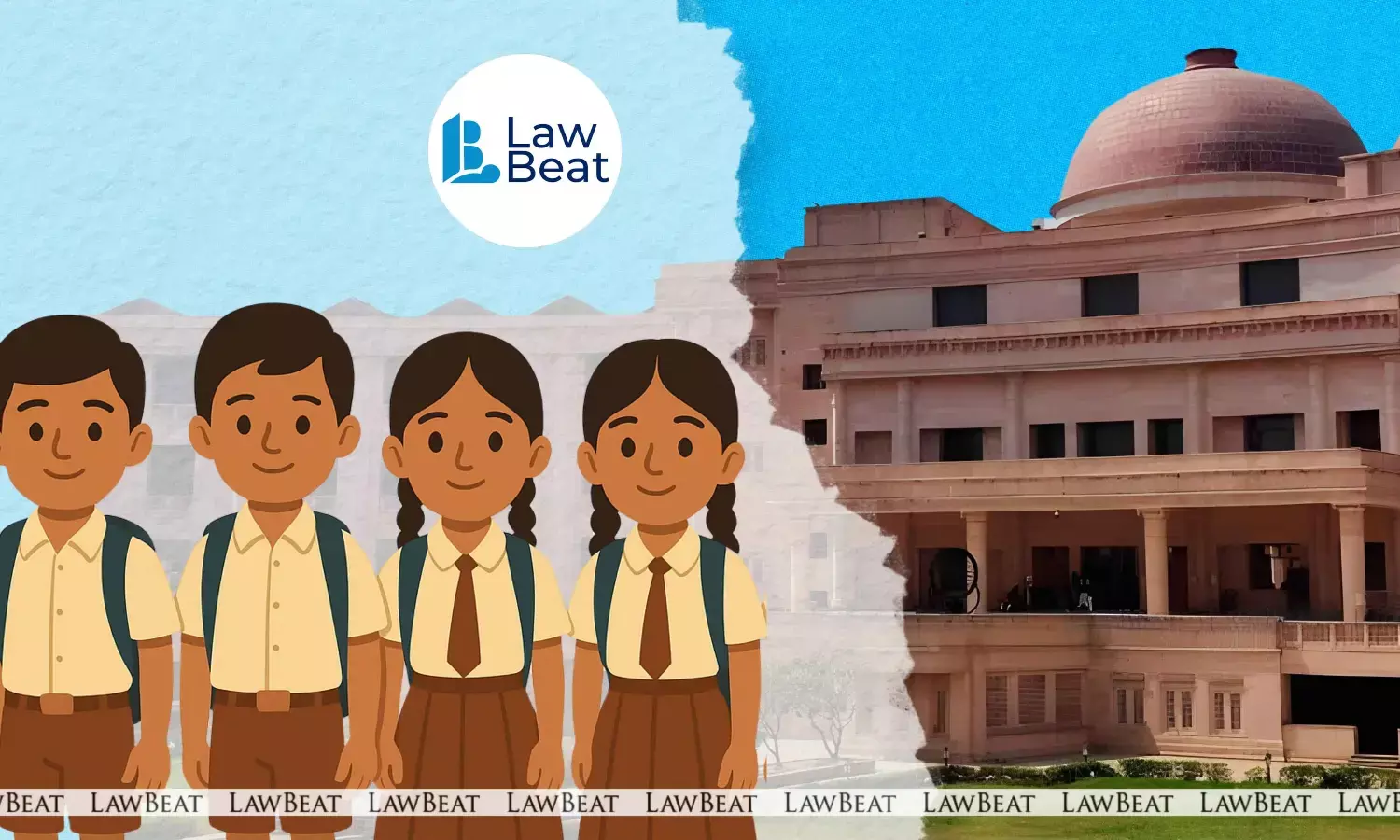'No Violation of Children’s Right to Education': Allahabad High Court Upholds UP School Pairing Policy

The Allahabad High Court on July 7, 2025, upheld the Uttar Pradesh government’s school pairing policy introduced as part of the National Education Policy (NEP), 2020.
Dismissing two writ petitions filed by more than 50 students challenging the policy, the bench of Justice Pankaj Bhatia held that the move to merge low-enrolment government primary and upper primary schools does not violate the constitutional guarantee under Article 21-A or the mandates of the Right to Education (RTE) Act and associated rules.
Students from Gautam Buddh Nagar district filed the petitions through their parents and guardians, who argued that the government order dated 16 June 2025, and a follow-up communication dated 24 June 2025 violated their children’s right to elementary education by mandating the merger of 105 government schools. The petitioners contended that the pairing would force young children to walk more than one kilometre to school, exceeding the prescribed limits under Rule 4 of the Uttar Pradesh RTE Rules, 2011 (UP Rules), and would result in school closures in their villages.
Counsel for the petitioners in one petition, Dr. L. P. Mishra, submitted that the merger policy effectively deprived children of their right to access education in a neighborhood school as required under Section 6 of the RTE Act. Referring to Rule 4(a) of the UP Rules, he argued that the state government has to establish a school in a habitation that has no school within a distance of one kilometre and has a population of at least 300.
Advocate Gaurav Mehrotra, appearing for other petitioners, argued that the executive instructions are neither a government order nor come within the definition of law as prescribed under Article 13. "The fundamental rights cannot be amended except in accordance with law and certainly not through the executive instructions," he stated.
On the other hand, the State, represented by Additional Advocate General Anuj Kudesia, defended the policy as a rational and necessary reform to optimize educational infrastructure and teacher resources. It was pointed out that 58 schools had zero students and many others had minimal enrolment, leading to underutilized buildings and skewed pupil-teacher ratios. The policy, the state argued, was not a closure of schools but a rationalization exercise aligned with NEP 2020 goals.
"Even after the paring, the state government is bound to ensure that free and compulsory education is provided to all children," he emphasised.
He further argued that as per the Rules of Business, the Additional Chief Secretary had full authority to issue the order, and therefore the petitioner’s claim that it was merely an executive instruction and not a valid government order should be rejected.
He further highlighted that the petitioners could not demonstrate by any verified data that the implementation of the policy of pairing would in effect result in negating the rights that are vested by Article 21-A of the Constitution.
The single judge bench rejected the plea that the pairing policy was arbitrary or violative of children’s rights.
Court noted that the policy explicitly provided for exceptions in cases where a child may need to travel beyond the 1 km or 3 km distance, and that Rule 4(2) of the UP RTE Rules allows such relaxation if transportation or other facilities are provided.
Court pointed out that the NEP, 2020, authorizes and prescribes for consolidation of small schools which have been rendered economically suboptimal and operationally complex to run and are posing a systematic challenge to governance and management.
Court also highlighted that although the government's decision was nothing but an action in furtherance of the NEP, 2020, the petitioners had not made any challenge to the policy itself.
Moreover, court noted that the approximate population of the State is 24 crore and if the petitioners' argument that for every 300 inhabitants one school should be available within 1 Km range, the state will have to provide for about 8 lakh schools; which would render the entire Rule 4(1)(a) to an absurdity.
Court added that on a conjoint reading of Rule 4(1), Rule 4(2) and Rule 4(3), it is the duty of the state government to establish schools as far as practical at a distance which is closest to the habitation, and if the same is not possible, to ensure that the children are provided facilities such as transportation.
Therefore, finding no material to the contrary in respect of guidelines of pairing in the NEP, 2020, the high court dismissed the petitions.
However, court directed that "it will be the duty of the Basic Shiksha Adhikari to ensure that no child is left out for being educated and all steps as are necessary shall be taken... in accordance with law".
Case Title: Krishna Kumari and 50 Ors vs State of UP and 3 Ors and connected matter
Download judgment here
